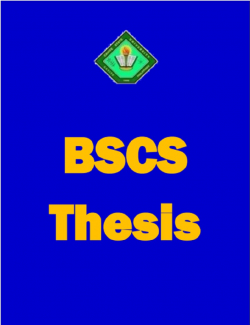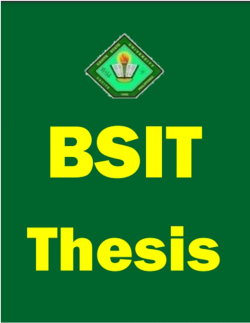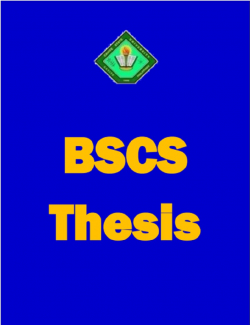Development of Computer Vision in Sign Language Detection

Type
Thesis
Authors
Category
Thesis-BSCS
[ Browse Items ]
Publication Year
2023
Pages
xv, 60p.
Abstract
In a world where verbal communication is the norm, the deaf and mute
community faces significant challenges in expressing themselves and engaging in
meaningful interactions. This paper explores the unique obstacles faced by individuals
with deafness and mutism and the role of computer vision in sign language detection
to overcome communication barriers. By accurately translating sign language
gestures, this innovative technology aims to facilitate meaningful communication
between the deaf/mute community and those who do not use sign language, fostering
inclusivity across various domains.
To develop the system, researchers employed the 4GT Methodology, which
consists of four phases: requirements gathering, design strategy, Implementation of
4GL, and testing. The team collected information through this methodology, designed
data structures and interfaces, and created a machine-executable representation of
the requirements. Programming languages such as PHP 8.2, JavaScript ES2017, and
Python 3.9.16 were used alongside CSS3 and HTML5 for web pages. The system was
developed on an Intel Core i5 AMD RyzenTM 7 5700U processor with 16 GB RAM,
running on Windows 10 Pro.
To evaluate the system, the researchers employed the ISO 25010 criteria,
which included functional stability, performance stability, compatibility, usability,
reliability, security, maintainability, and portability. The evaluation panel consisted of
IT professionals, staff, and representatives from the deaf/mute. The system received
positive feedback and demonstrated strong performance, achieving a "Very
Satisfactory" rating with an average mean of 4.02. It surpassed expectations by
fulfilling objectives, requirements, and desired features.
Based on the evaluation, several recommendations were made to enhance the
system's functionality. These recommendations included adding new sign languages,
integrating the system into a mobile application, incorporating a feature for text-to-sign
language translation, and enabling sign language-to-text or voice translation during
video calls. Implementing these enhancements would improve the application's
accessibility and utility for deaf and mute individuals.
The Development of Computer Vision in Sign Language Detection system
offers a valuable solution for bridging communication gaps between the deaf/mute
community and those who do not use sign language. By accurately translating sign
language gestures, this technology promotes meaningful interactions, inclusivity, and
social integration in healthcare, education, and social interactions. The positive
evaluation and feedback received highlight the system's effectiveness in meeting the
needs of its target audience. Future enhancements, as recommended, will further
elevate the system's capabilities and expand its reach to support a wider range of sign
languages and communication scenarios.
community faces significant challenges in expressing themselves and engaging in
meaningful interactions. This paper explores the unique obstacles faced by individuals
with deafness and mutism and the role of computer vision in sign language detection
to overcome communication barriers. By accurately translating sign language
gestures, this innovative technology aims to facilitate meaningful communication
between the deaf/mute community and those who do not use sign language, fostering
inclusivity across various domains.
To develop the system, researchers employed the 4GT Methodology, which
consists of four phases: requirements gathering, design strategy, Implementation of
4GL, and testing. The team collected information through this methodology, designed
data structures and interfaces, and created a machine-executable representation of
the requirements. Programming languages such as PHP 8.2, JavaScript ES2017, and
Python 3.9.16 were used alongside CSS3 and HTML5 for web pages. The system was
developed on an Intel Core i5 AMD RyzenTM 7 5700U processor with 16 GB RAM,
running on Windows 10 Pro.
To evaluate the system, the researchers employed the ISO 25010 criteria,
which included functional stability, performance stability, compatibility, usability,
reliability, security, maintainability, and portability. The evaluation panel consisted of
IT professionals, staff, and representatives from the deaf/mute. The system received
positive feedback and demonstrated strong performance, achieving a "Very
Satisfactory" rating with an average mean of 4.02. It surpassed expectations by
fulfilling objectives, requirements, and desired features.
Based on the evaluation, several recommendations were made to enhance the
system's functionality. These recommendations included adding new sign languages,
integrating the system into a mobile application, incorporating a feature for text-to-sign
language translation, and enabling sign language-to-text or voice translation during
video calls. Implementing these enhancements would improve the application's
accessibility and utility for deaf and mute individuals.
The Development of Computer Vision in Sign Language Detection system
offers a valuable solution for bridging communication gaps between the deaf/mute
community and those who do not use sign language. By accurately translating sign
language gestures, this technology promotes meaningful interactions, inclusivity, and
social integration in healthcare, education, and social interactions. The positive
evaluation and feedback received highlight the system's effectiveness in meeting the
needs of its target audience. Future enhancements, as recommended, will further
elevate the system's capabilities and expand its reach to support a wider range of sign
languages and communication scenarios.
Description
Undergraduate Thesis.
xv, 60p.; cm.
xv, 60p.; cm.
Biblio Notes
Includes references and appendices.
NAVARRO, JONH GERALD T., ROBLE, GIDEON CARL C., and SUMALINOG,
ALMAR JAMES. Development of Computer Vision in Sign Language Detection.
Undergraduate Thesis. Bachelor of Science in Computer Science. Cavite State
University – Bacoor City Campus, City of Bacoor, Cavite. September 2023. Adviser:
Ms. Donnalyn B. Montallana.
NAVARRO, JONH GERALD T., ROBLE, GIDEON CARL C., and SUMALINOG,
ALMAR JAMES. Development of Computer Vision in Sign Language Detection.
Undergraduate Thesis. Bachelor of Science in Computer Science. Cavite State
University – Bacoor City Campus, City of Bacoor, Cavite. September 2023. Adviser:
Ms. Donnalyn B. Montallana.
Number of Copies
1
| Library | Accession No | Call No | Copy No | Edition | Location | Availability |
|---|---|---|---|---|---|---|
| CvSU Bacoor City Campus | 3000059 | 1 | Yes |




